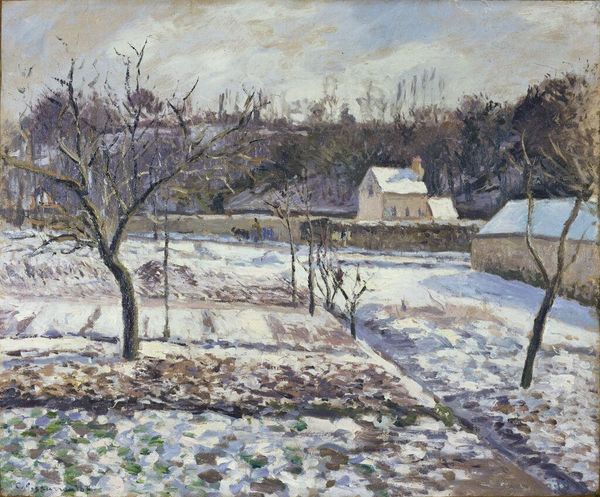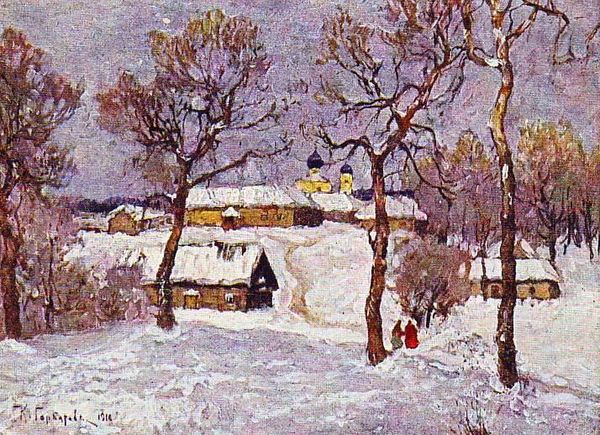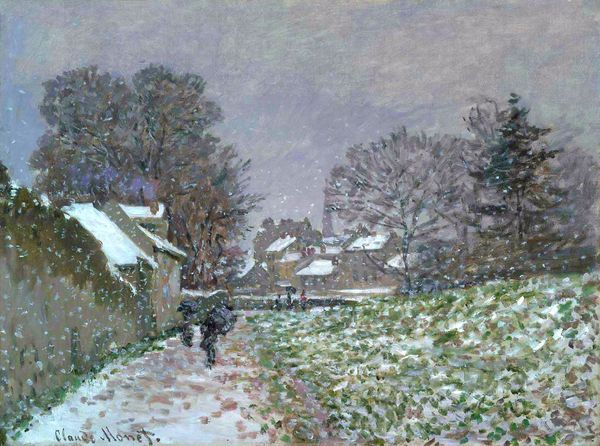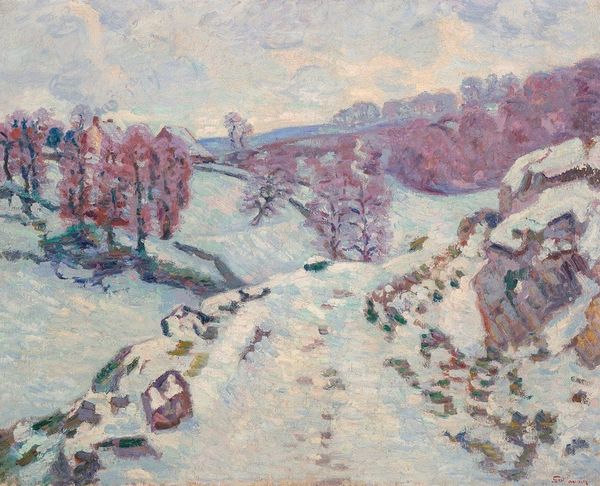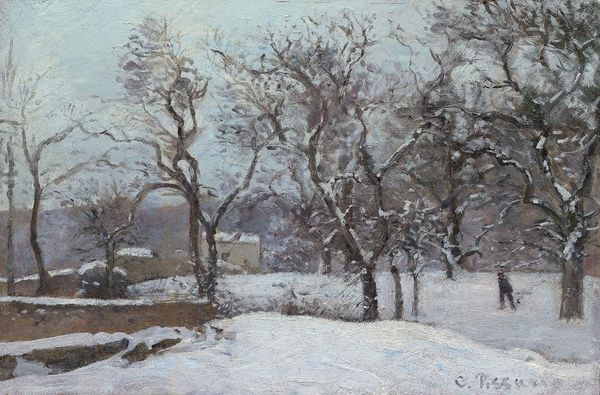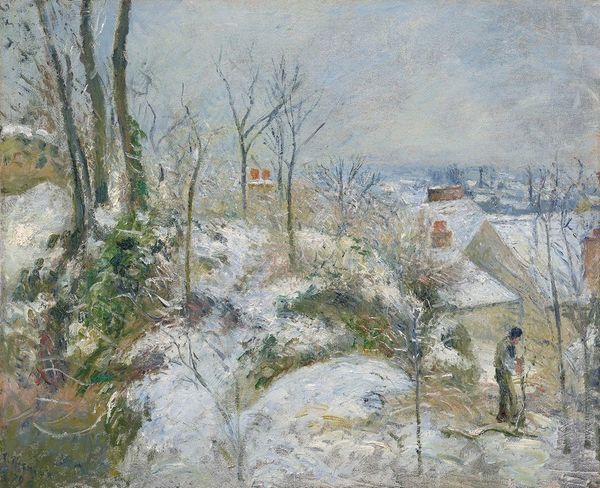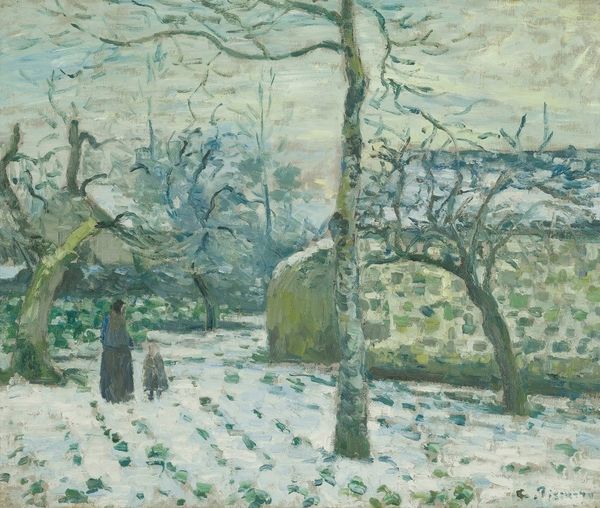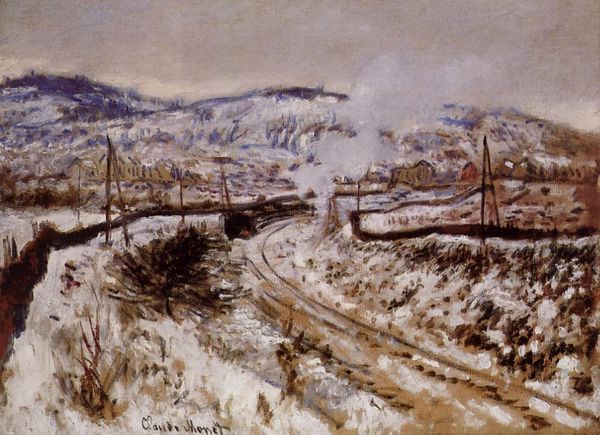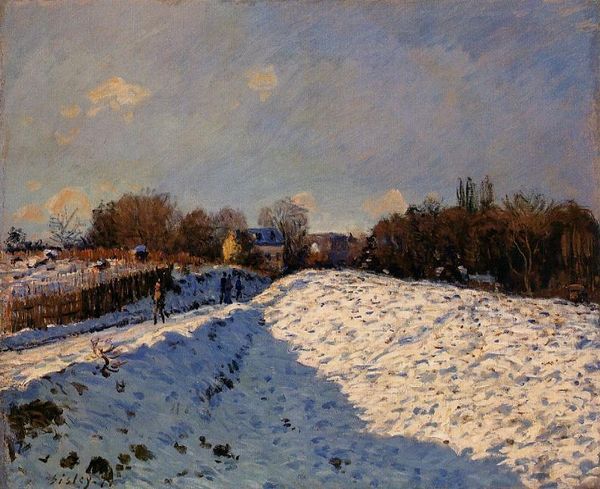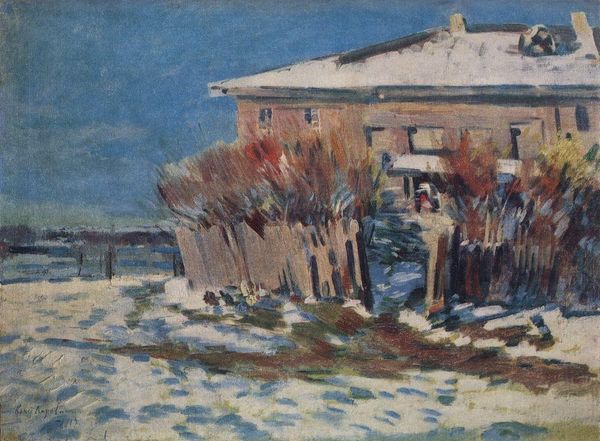
Copyright: Public domain
Curator: What immediately strikes me is how the lavender light pervades this winter scene—a beautiful, hushed stillness. Editor: This is "The Dorking Road, Coldharbour, in Snow," painted in 1916 by Lucien Pissarro. It's an oil painting done en plein air, and it definitely captures a moment of quietude. But considering the year, I can’t help but see it also through the lens of World War I. Curator: Interesting. I see the bare trees and muted colors, and it makes me think about how winter, in general, has always been symbolic of dormancy and introspection. In that light, could we also say that nature itself is grieving? Editor: Perhaps. Pissarro, though part of the Impressionist movement, was politically engaged. Think about where Coldharbour is located— Surrey, England. This wasn't a battlefield, but the psychic weight of the war certainly impacted daily life. The snow, rather than just pretty, might symbolize the numbing effect of prolonged conflict, blanketing emotions. Curator: It’s true—the color palette creates an emotional experience. Although, his approach to snow diverges quite sharply from traditional symbolic depictions such as purity or emptiness; instead, here we witness depth through various applications and colors. To that extent, how much can we tie an artwork to broader narratives versus analyzing the artist’s approach to representation and symbol? Editor: I think both are crucial. The layering of brushstrokes – indicative of Impressionism – mimics how collective trauma accumulates, how history is built through personal experience. Analyzing Pissarro’s technique is important, of course, but we cannot strip away the social environment surrounding it either, which has shaped and influenced Pissarro regardless of personal intention. Curator: It seems that the landscape, therefore, can transform to bear witness beyond itself—to stand as an enduring symbol of its own era and for the audience who perceive it. Editor: Precisely. It reminds us to dig deeper, beyond aesthetics, to uncover complex layers.
Comments
No comments
Be the first to comment and join the conversation on the ultimate creative platform.

